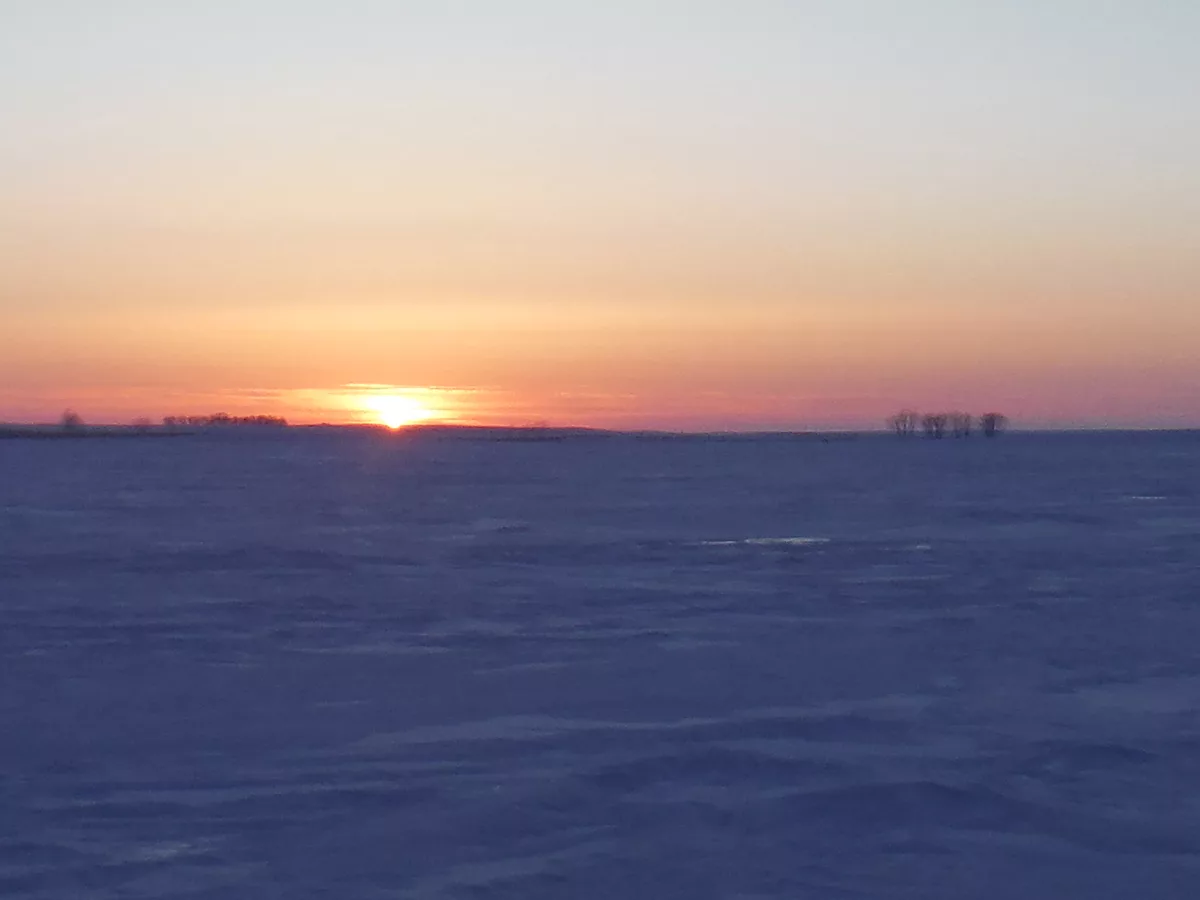
Precipitation like snow and late season rain can impact ice formation, as can persistent snowcover. Keep elements like wind, inflowing water, and other weather variables in mind when venturing out onto first ice for safety and success. Simonson Photo.
By Nick Simonson
Cold, warm. Gusty, calm. Snow, rain. Flip a coin during these days on the calendar and you’ll likely get the same randomized results in the weather, but in these northern climes as fall fades into winter, that’s a common occurrence. Like the old saying goes, “if you don’t like the weather here, wait ten minutes and it’ll change…then you’ll really hate it.”
All kidding aside, the weather these days has a lot of influence on the next season in the sportsman’s calendar – ice fishing. Being a careful observer of those trends will not only provide a safer season on that early-forming ice for you and your fishing buddies, but it will help you predict the trends which will drive your ice angling success for the rest of the season as well. Keep these two impacts in mind while keeping an eye on the sky and that overnight temperature forecast as you prepare for the start of ice season.
Solid Set
Ice formation is influenced by a great number of factors, with temperature being the leading indicator as the surface freezes and the scene sets up for early ice angling. Nights at or below zero help surface water solidify quickly and sets up a smooth sheet as layers add below the initial one. However, temperature is not the only influencer on the formation of good ice. When temperatures get above freezing, that obviously doesn’t help with the creation of ice and with the melting that occurs, it can hinder it via accumulation of surface water and by producing runoff which weakens ice when it flows into a lake.
Wind is perhaps the second-greatest element impacting the formation of ice, and windy days, like the stretch experienced through the region over the Thanksgiving holiday weekend, are capable of blowing partially-formed ice sheets around a lake, and easily crushing that skim later which has formed on parts of a water body. In turn, layers on the side of a lake receiving the gusts often initially form from refrozen chunks of ice and are less sturdy and structurally sound than the leeward side of a lake, or those lakes that timely freeze over entirely on a calm night.
For ice formation, there is no good form of precipitation. Snowfall serves as an insulator, slowing down the creation of ice and late season rains melt surface ice quickly, and like the runoff of melting snow, can cause influxes of water in areas where gullies and culverts deposit running water into a lake or river. Considering all of these variables, it is important to proceed cautiously onto first ice and additionally, estimate their impact on the bite and where the best place to set up may be as a result.
Bite Influencers
While wind may be a bad thing for ice formation, once the surface is solid its previous pattern can have a major impact on the location of fish and how they feed. If there are three or four days of considerable wind before a lake ices over, it is likely that the side of the water receiving most of the gusts will be roiled up ahead of the lake freezing solid. This can create a field of turbid water that lingers well into the ice season. Considering water clarity (or lack thereof) influences a great number of presentation tactics under the ice as the season gets going and the first augers fire up.
The turbidity may also influence where fish are locating, especially light-sensitive species like walleyes and crappies, and they may relate shallower or deeper along breaklines and weedlines as a result of the change in water clarity that windy systems can cause just before ice up. Additionally, in dingy water, brighter lures may become a necessity in drawing the attention of fish. On the flip side of the coin, if things were calm for a stretch prior to ice up, water clarity may be on the other side of the scale, and more natural presentations, lifelike color schemes, and even smaller hooks and jigs may be required for fish, which can see better in the clearer water under the ice. It may also provide a sight-fishing advantage for early ice anglers looking down the hole.
Finally, the influx of meltwater due to a warmer day or precipitation condensed into a creek, natural funnel, or drain-and-culvert system can change where fish relate and how they behave, not only at early ice, but later in the season as well. Inflowing water brings oxygen, detritus, and organic material into a bigger body, and to it often come smaller fish and the bigger fish that eat them. While keeping an eye on the safety of the ice surrounding these points of inflow and avoiding areas where ice has weakened, anglers can adjust their locations and tactics and target actively feeding fish under the ice drawn into this recharge of water.
Remember that no ice is safe ice – even the clearest ice coming on the coldest and calmest night – and a region is rarely lucky enough to have uniform ice formation under those ideal conditions. Knowing how the wind was blowing, what the temperature trends were like, and how precipitation of either kind influences ice creation can help you gauge when it’s safe to head out. By keeping tabs on those ice formation influencers, as an added bonus, you’ll also have some insight as to how the lake and its populations of fish have set up for the early season, and in some cases even longer. Be safe, be weather aware, and be ready for all of the variables that come with first ice, and some of the best hardwater fishing of the winter…in our outdoors.
